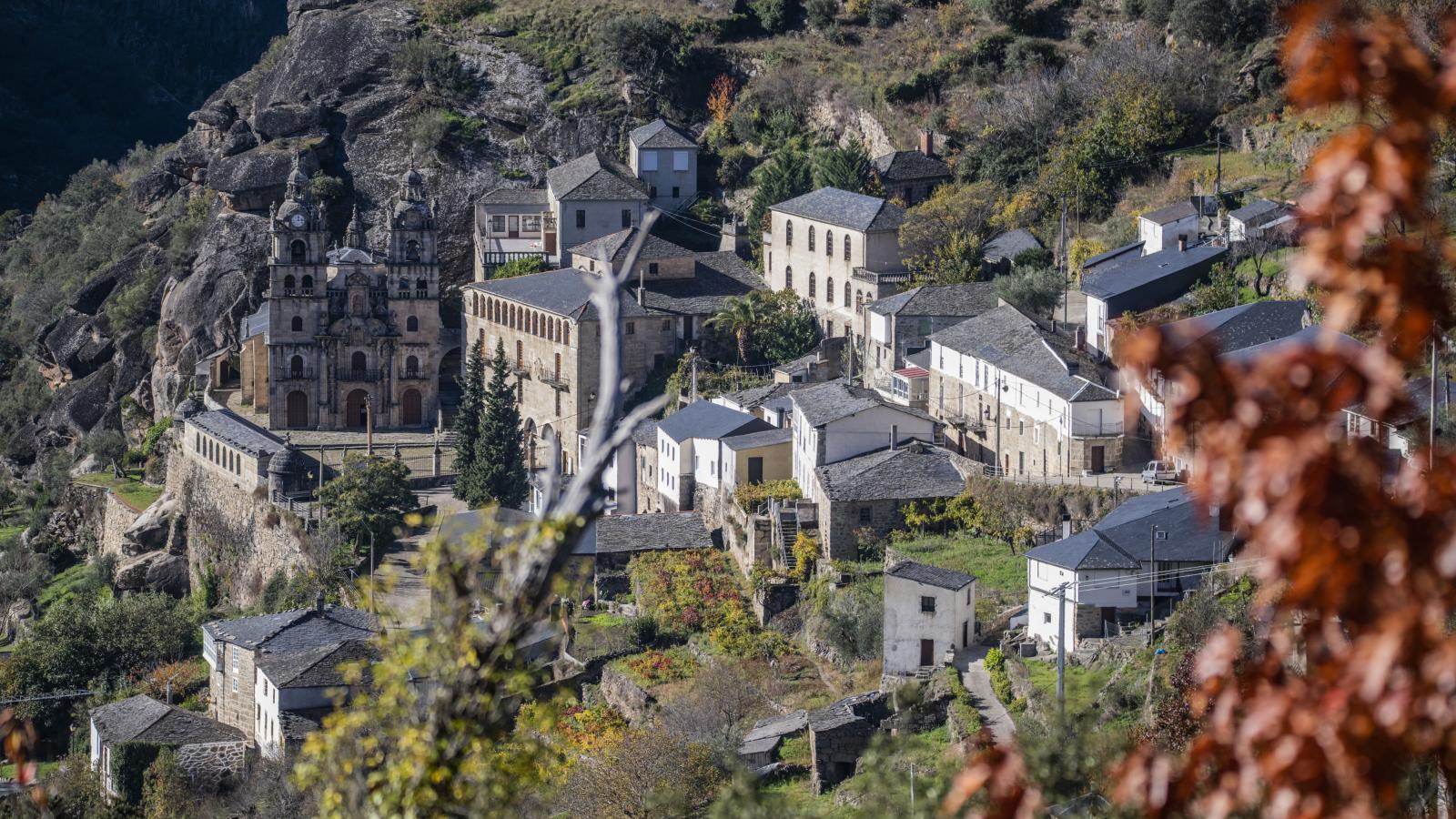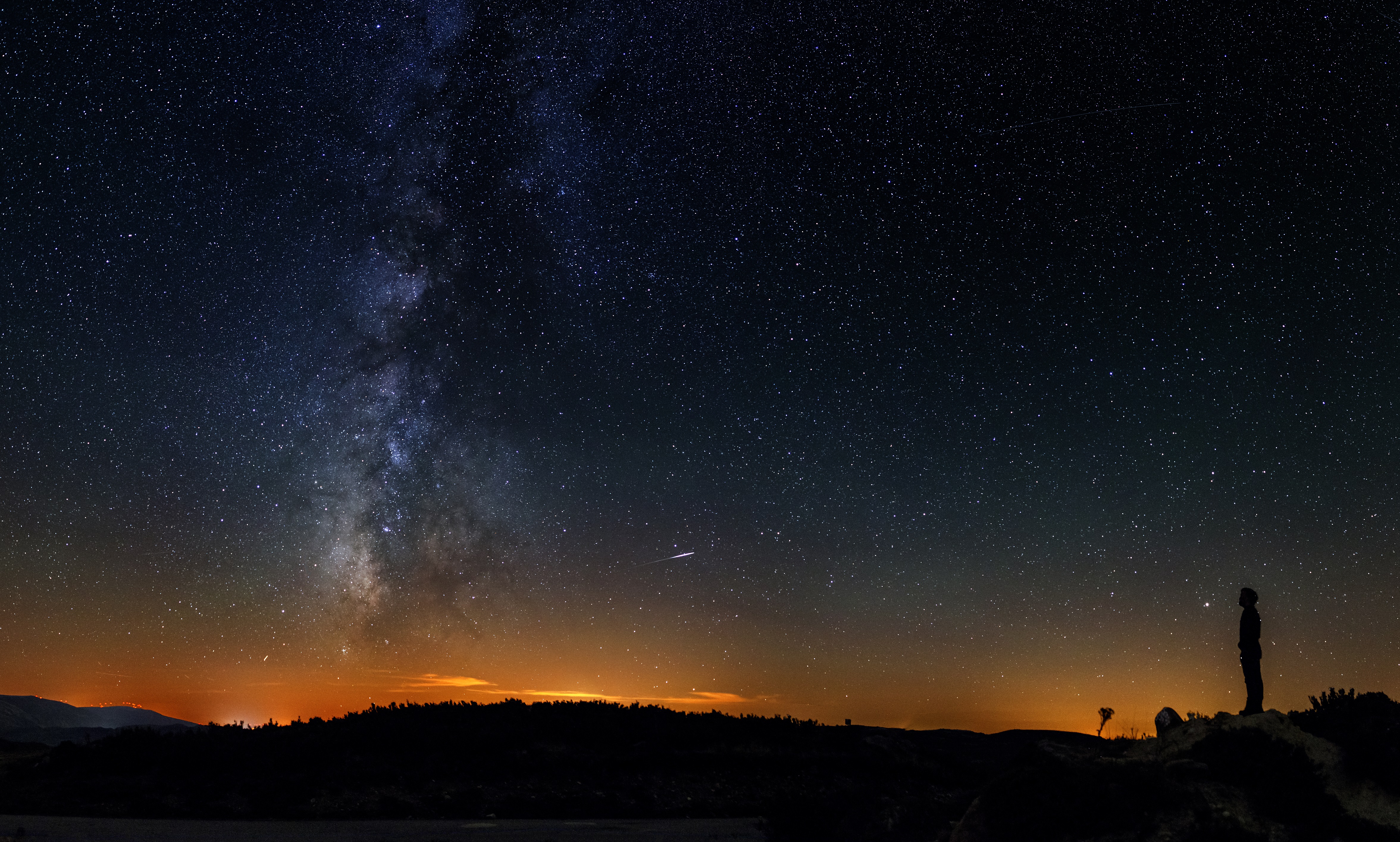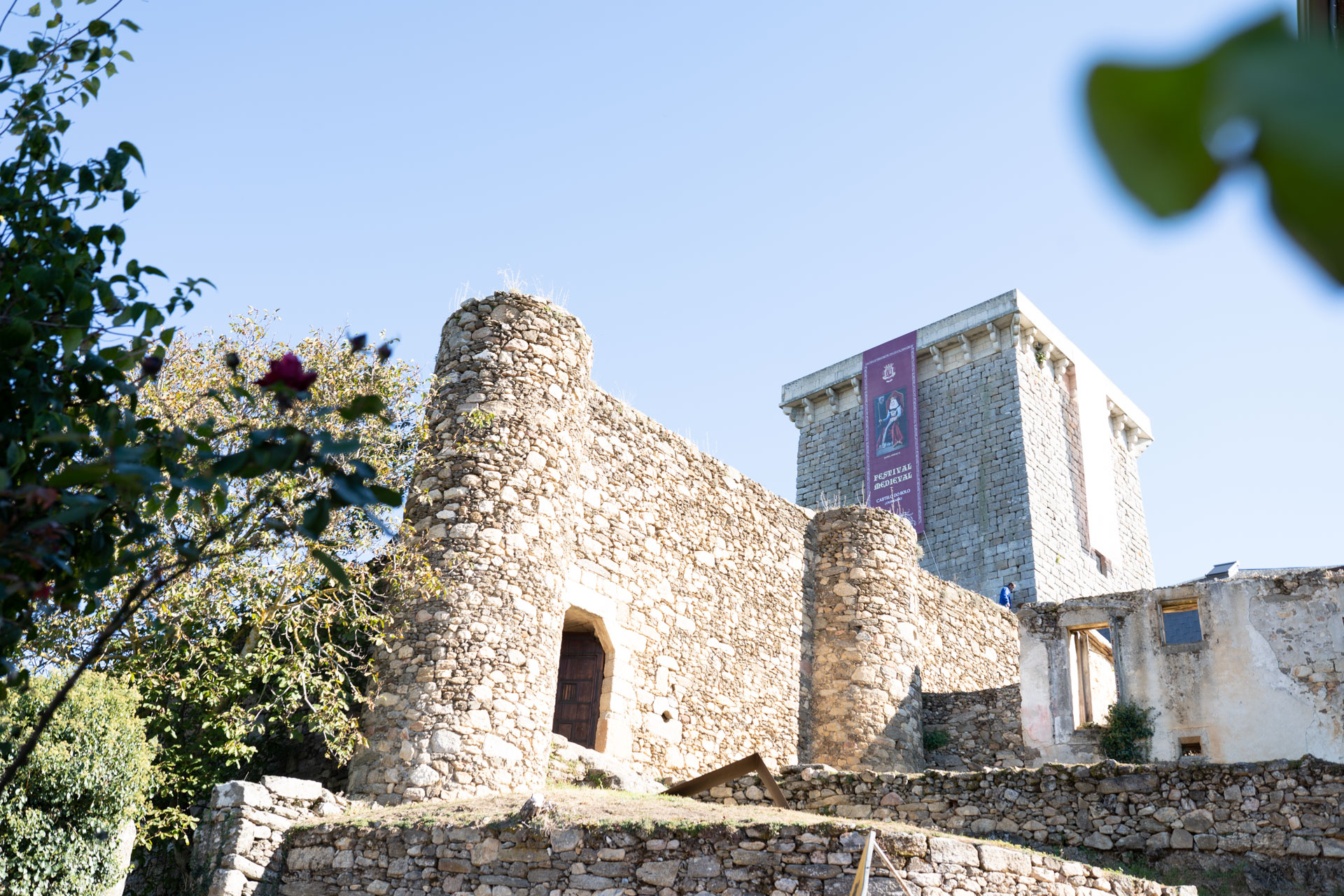We leave Ourense on the road 536 and we turn on the OU-601 to Chandrexa de Queixa, a natural paradise worth of visit. What is notable is the reservoir with the same name. To know it, we can walk the circular route by car on the river side. Back on the road OU-536, in high Cerdeiras or Guístolas Fountain, there are a group of milestones in the centre. We address San Xoán de Rio, where one of the most beautiful routes in the province is: A Fraga route.
Before getting to a Pobra de Trives, two points of reference of its roman past: the Ponte Navea, rebuilt in the Middle Ages although the visible remains of the roman industry are remarkable. Trives Vello, where the roman remains found make us believe it was a mansion. It is worthwhile a walk to know the streets and its buildings with beautiful coats of arms and galleries from this 19th century village.
It is a must the Santa Leonor centre, where we find the Childhood and School Museum. It is placed in the old school and it allows us to make a tour around teaching and childhood from the end of the 19th century until today. Here we can also visit The Mountain of Life, a journey where through light, voices, music and images, you will be able to find out more about the “Terras de Trives” and be part of them- a unique and different experience.
Leaving Trives along OU-636, we find Cabalar and Bibei bridges. The first one no part of its roman industry is not conserved, although the roman way remains are well preserved. Bibei Bridge, on the other side, is entirely Roman and it is placed at the end of a canon where the Bibei river flows. Its robustness makes it possible that it has lasted for centuries.
From Trives we turn off to the Manzaneda winter station, a wonderful sky and mountain sport-touristic station placed in the Serra da Queixa, with different activities all year round.
On the road OU-170 that links A Pobra de Trives with Manzaneda, there is a wonderful church-museum in Sobrado whose origin is lost in time and it is the only sample of Romanesque art in the district. Today, the church adjacent to the monastery is in ruins. The village of Manzaneda, with a monumental complex and the remains of its fortress, has designed a circuit to visit each of its historical monuments.
DID YOU KNOW THAT?
In the Fraga de San Xoán de Río route, we find a bronze sword linked to the legend of Excalibur by some writers. An easiest route is the one of A Cántara da Moura, in A Veiga.
The Sequeiros Route in Trives is a very easy circular path starting in Pena Folenche, a small village.
Near Manzaneda, from a 1,4 km walk, the Pumbariño chestnut is a millennial chestnut of twelve metres diameter declared Galician Natural Monument. It is found near the Souto de Rozavales.
From Manzaneda we take the road OU-636 on Larouco and later the OU-533 where we turn off to O Bolo. Here we can visit its castle and the interpretation centre from the Middle Ages.
Very close, back in the road OU-533, it is the impressive Marian Sanctuary of As Ermitas, where nature and mysticism come together in a harmonic way next to Bibei river. Close to the sanctuary, in an isolated area of the river, there is an ideal pool to rest or take a bath, with three old flour and oil mills which have been recently restored.
We go back to OU-533. In the Alto do Covelo we can turn off to get to know A Veiga lands.
A Veiga is a natural mountain paradise with more than two thousand metres high heights and interesting routes. You can visit places such as Lagunas Glaciares de ‘A Serpe’ and ‘Ocelo’ (the snake and Ocelo glacial lakes), going up to Pena Trevinca ‘Techo de Galicia”’ (Galicia’s roof), the highest point of Galicia. Those are difficult routes, but there are specialised guides.
You can take a pleasant bath in the different pools and sandbanks. You can also enjoy a route aboard a catamaran through the Prada reservoir, discovering the underwater hidden secrets.
We are facing a Destino Starlight, one of the few places where you can watch stars without light or environmental pollution. The Star viewpoint of ‘O Rañadoiro’ or the star viewpoint of ‘As Tablillas’ das Lagoas are remarkable, as well as the Pena Trevinca Astronomic Centre.
Back on the road OU-533 we go towards Viana do Bolo. Its unique and picturesque location is the starting point of a tour around the region. It is placed on a small promontory surrounded by the Vao reservoir arms, topped by the remains of the old Middle-Ages fort.
Another place of interest is the Sanctuary of Pai Eterno, standing on the extraordinary balcony over Bibei river.
Leaving Viana we can stop at San Cibrao viewpoint, with amazing views to the village and the reservoir. We should visit Vilariño de Conso, the municipality where O Invernadeiro Natural Park is. Here we can emphasise the Ola do Cenza, where we can visit both the fall and the top of the waterfall by pleasant, short walks.
In Chaguazoso we find the Morrena Glaciar de Val do Cenza is unique in Galicia for its extension. It is part of the Val Glaciar do Cenza, one of the most important ones in Europe. In this area it is remarkable the route around the Cenza reservoir.
We leave to A Gudiña on OU-346, along the As Portas reservoir. On the way we find the Vilariño swing, the highest one in Galicia with one thousand metres high. Placed in the entire Via da Prata, it offers amazing views over As Portas reservoir, the Camba mounts and the Invernadeiro Natural Park. We finish our tour in A Gudiña.
DID YOU KNOW THAT?
The Codos de Larouco: the road from Larouco to Pobra de Trives (OU-536) is a winding road that almost preserves the Roman way used 2000 years ago.
In Viana do Bolo, the As Borreas mines offer an extraction system of Ruina montium used in ancient Rome.





* The comments made without logging in will be pending approval prior to publication.